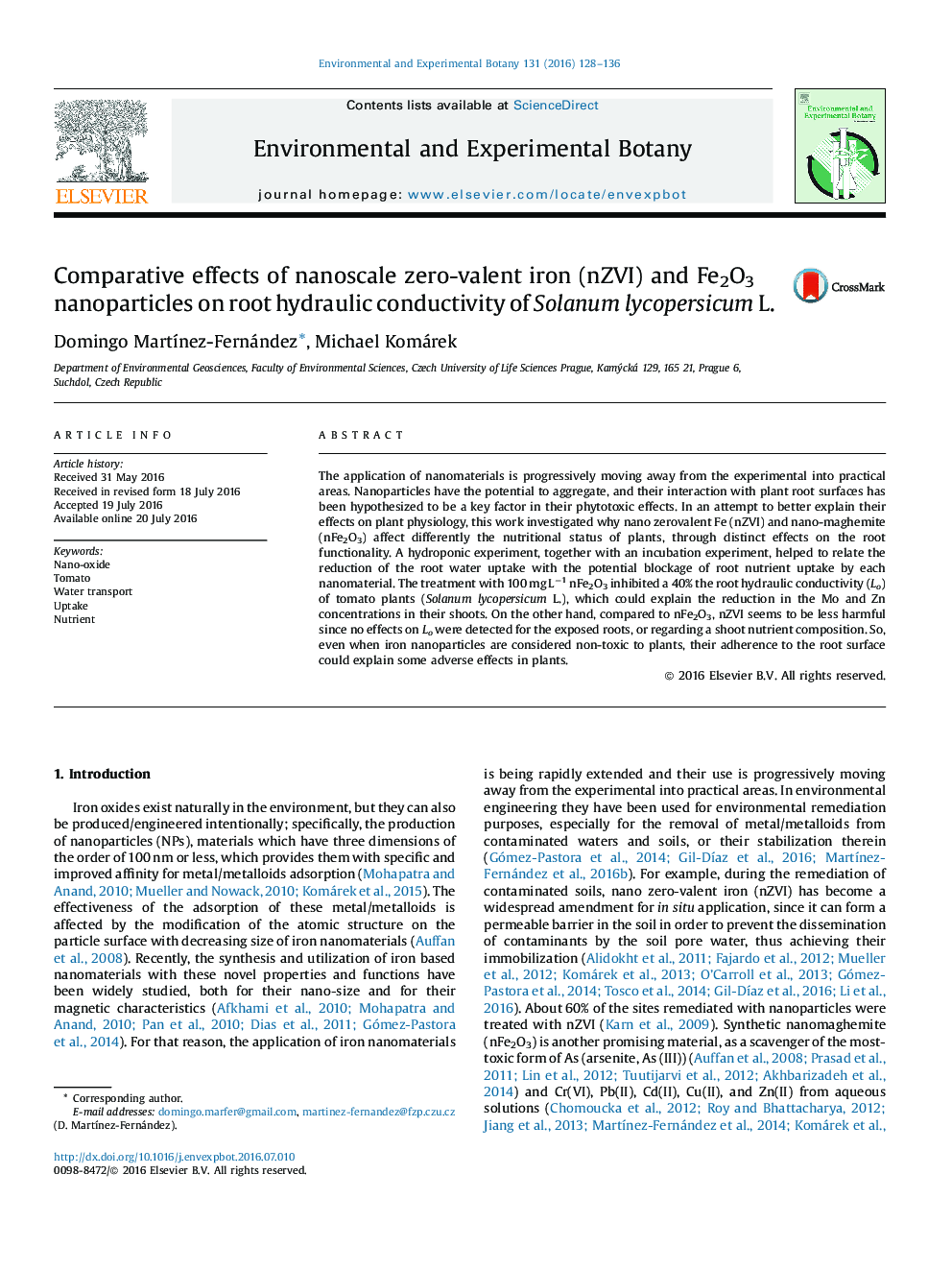| کد مقاله | کد نشریه | سال انتشار | مقاله انگلیسی | نسخه تمام متن |
|---|---|---|---|---|
| 4554006 | 1628046 | 2016 | 9 صفحه PDF | دانلود رایگان |

• NZVI and nFe2O3 affected differently the nutritional status of tomato plants.
• Root water conductivity was lowered by nFe2O3 (100 mg L−1), but not by nZVI.
• Only nFe2O3 gave rise to lower levels of Mo and Zn in the shoots.
• NZVI seems to be less harmful than nFe2O3 for plants regarding root water uptake.
The application of nanomaterials is progressively moving away from the experimental into practical areas. Nanoparticles have the potential to aggregate, and their interaction with plant root surfaces has been hypothesized to be a key factor in their phytotoxic effects. In an attempt to better explain their effects on plant physiology, this work investigated why nano zerovalent Fe (nZVI) and nano-maghemite (nFe2O3) affect differently the nutritional status of plants, through distinct effects on the root functionality. A hydroponic experiment, together with an incubation experiment, helped to relate the reduction of the root water uptake with the potential blockage of root nutrient uptake by each nanomaterial. The treatment with 100 mg L−1 nFe2O3 inhibited a 40% the root hydraulic conductivity (Lo) of tomato plants (Solanum lycopersicum L.), which could explain the reduction in the Mo and Zn concentrations in their shoots. On the other hand, compared to nFe2O3, nZVI seems to be less harmful since no effects on Lo were detected for the exposed roots, or regarding a shoot nutrient composition. So, even when iron nanoparticles are considered non-toxic to plants, their adherence to the root surface could explain some adverse effects in plants.
Figure optionsDownload as PowerPoint slide
Journal: Environmental and Experimental Botany - Volume 131, November 2016, Pages 128–136